Perchlorovinyl facade paint: characteristics and varieties. Facade perchlorovinyl paint: technical specifications and features
Facade decoration by painting is a fairly common method, it is used even more often than others decoration Materials. This is not surprising, because painting is almost the oldest way to give the building an aesthetic appearance. A huge variety of varieties and types of paints can confuse even an understanding person when choosing. It is worth knowing that facade paints are very different and not only in color and consistency, but in terms of their technical characteristics, durability and quality. Perchlorovinyl paint is one of the types of facade paint, which has a lot of advantages and deserves special attention.
Features and properties of facade paints
In order to be able to compare and evaluate the quality of the material, you need to understand the features and basic properties of paints in general, what a number of advantages they should have, and what makes them not high quality. In the case of perchlorovinyl paint, the following should be said:
- its components create high protection from all types of atmospheric effects, from ultraviolet radiation, rain, frost and snow. The paint is very well in contact with the surface and deeply penetrates inside, which creates a reliable layer of protection against the penetration of moisture and retains the finish much longer;
Perchlorovinyl paint feels equally good on wood, concrete, plaster and brick. This greatly expands its capabilities and, unlike acrylic paintmakes it almost universal;
An unambiguous plus is the frost resistance of perchlorovinyl paint, it does not thicken even at minus 15-20 ° C and can be used in winter painting, which puts it higher than other facade paints. The only condition is that when painting in winter, you can not add plain water;
Regardless of the shade of perchlorovinyl paint, the color will be saturated and remain so for 2-3 years, regardless of weather conditions.
It is worth remembering that such a paint can not be applied to the surface if it rains or snows, the facade should be dry, without spots of moisture. Also, direct exposure to the sun and intense heat are favorable for painting, it sets and dries very quickly, so spots and cracks can appear. On a hot day, you can paint the walls gradually and paint the side of the house where the sun does not fall. Experts recommend adding a little liquid soap to the perchlorovinyl paint in the heat, which will increase the drying time.
However, these disadvantages are present in almost all facade paints, so you should pay attention to the positive aspects.
Surface preparation
Before painting the walls of the house you need to alert, scale preparatory phase depends on what material the walls are made of. For example, a wooden house must be treated with antiseptic agents, then apply a primer layer and create a good hitch for the paint.
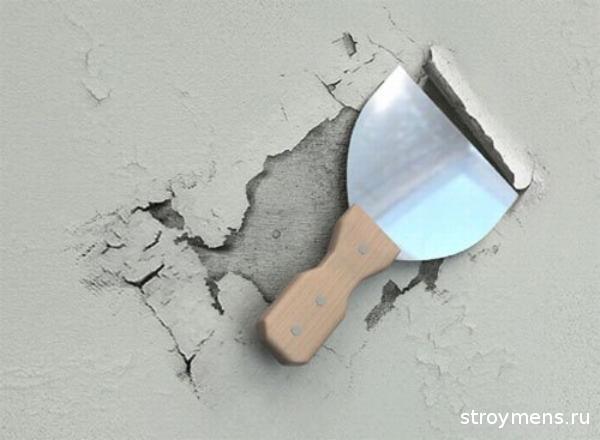
If the house is made of concrete slabs and they already had a coating, then the paint layer must be removed, given the large amount of work, it is best to use equipment such as sandblasting, or clean with a hand tool. Then the surface is washed off with water and covered with a primer. Removing the old coating is a prerequisite, otherwise the adhesion will be much lower, which will affect the quality of work and operating time.
If the house was insulated, then in addition to the standard layer of plaster, it is necessary to make reinforcement with a mesh so that the surface does not deform.
Paint application
Despite the fact that the painting process is fairly well known to everyone, it is necessary to observe some rules for staining and using directly perchlorovinyl paint.
In no case should paint be mixed with other types of paint, as is sometimes done to obtain original shades. Perchlorovinyl paint has its own wide range of colors, from which you can choose the desired color. It is worth knowing that the paint contains xylene and solvent, which are harmful to the skin and especially the mucous membrane, so you need to paint with gloves and a protective mask. Perchlorovinyl paint is not allowed to be used indoors. The process of applying paint can be done manually, using a roller and brushes, or with a spray gun, which is much more convenient and faster.
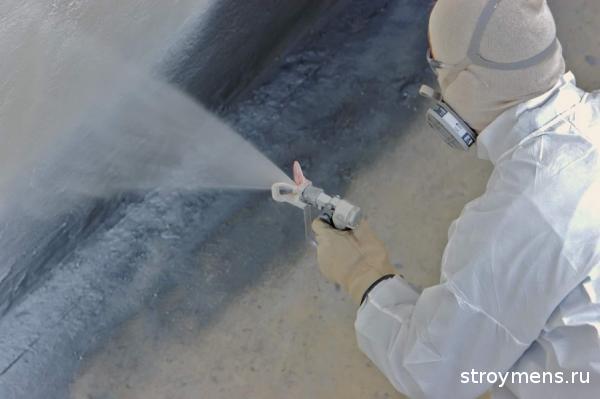
Regardless of which painting method you choose, in all cases with coloring, you need to apply the paint starting from the top and leading down, rolling or covering the streaks from above. The roller should be driven by direct vertical or horizontal movements, it is impossible to write circles or roll the paint diagonally in different directions, otherwise the stripes will be visible after drying.
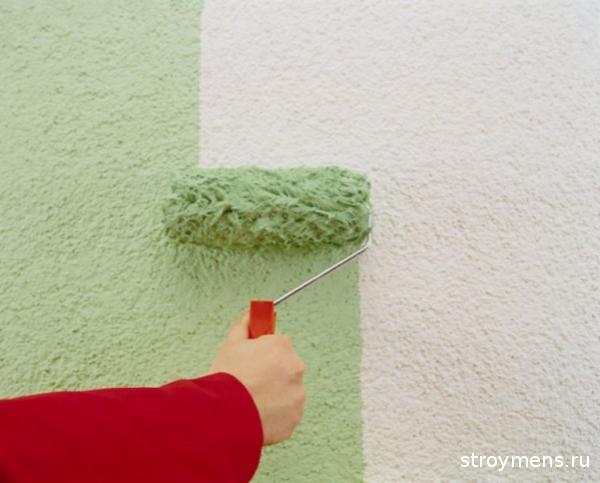
To get a saturated color and a dense layer of paint, you need to apply two layers. In this case, you need to correctly calculate the amount of paint and not spend extra on the first layer. The first layer should cover the entire surface with a uniform thin film, you should not seek perfect shelter and roll one place several times. The second layer is applied after the first has dried and covers all the shortcomings of the first, plus it is no longer absorbed into the wall, so with the second layer there will be saturation and brightness.
Do not stop at half the work, it is recommended to paint over the selected area in one go, otherwise the stripes between the layers applied with a break may be noticeable. With the right approach, the paint consumption for a two-layer coating is not large.
For one layer per square meter, 150-230 grams are expended; accordingly, about 400 grams will be spent on two layers. When choosing, you need to pay attention to GOST, because vinyl chloride paint It has the designation 25129-82, and if you meet another marking, it may well turn out to be a fake. High-quality perchlorovinyl paint has a guaranteed shelf life of 10 years, while it should not be exposed to the sun.
Relatively recently, a new type of paints, which are made on the basis of perchlorovinyl, has appeared on the construction markets. Perchlorovinyl paint is used for outdoor work, so it is often called facade paint. It has so many useful qualities that other finishing materials of this kind cannot boast of.
But first things first.
Specifications
Like any material, this one has several varieties that differ in the amount of volatile substances in their composition, as well as the purpose and method of application. I must say that specifications Perchlorovinyl paints vary depending on the particular variety.
Classification
So, the main types can be called the following:
- Enamel ХВ-125. It is used for painting exclusively wooden and metal surfaces;
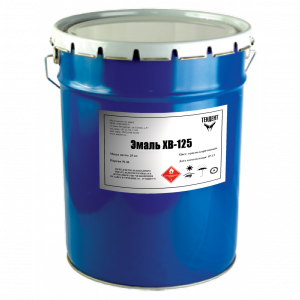
- Perchlorovinyl facade paint XB 161. This is a mixture of various fillers and pigments, which are dissolved in 10% PVC varnish. The share of non-volatile substances is about 47%. This type is used for, as well as plastered surfaces;
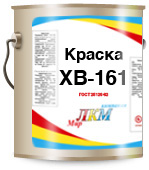
- Enamel XB-182 is a modified enamel in which the share of non-volatile substances can be as low as 36%. It is used for decorative painting of concrete and brick surfaces.
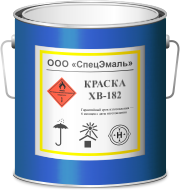
Of the last two, the most widespread is ХВ 161, since its price is relatively low. In addition, the XB 161 paint is almost universal in the matter of temperature conditions - you can work with it in the temperature range from -20 to +40 degrees.
Characteristics XB 161
Here are the main technical characteristics of perchlorovinyl facade paint ХВ 161:
- Drying time (ambient temperature is 20 degrees above zero) - no more than a day;
- Paint consumption per unit area is about 270 g with an average layer thickness of about 25 microns;
- Viscosity - 30-45 s. This value of this indicator allows you to use a spray gun, without adding solvents or other diluents;
- The relative amount of non-volatile substances is not more than 47%;
- After solidification, the layer has bending elasticity - a maximum of 5 mm;
I must say that the other two species have similar indicators, but still different from the data.
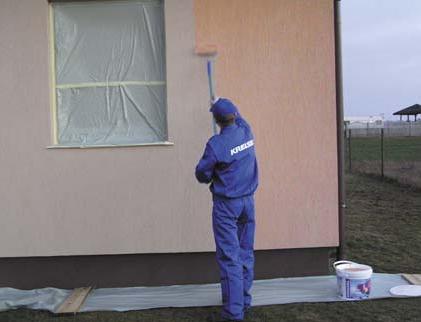
Advantages and disadvantages
Like any other material, this enamel has its own positive and negative qualities.
The advantages include the following properties:
- Very high adhesion. This allows the paint to soak deep into the structure of the substrate, which creates a barrier against moisture. In addition, the paint itself is able to maintain its integrity for a very long time;
Advice!
To further increase adhesion, before using this material, the surface is coated with special perchlorovinyl primer.
- The presence of several species allows the use of similar enamels on all types of surfaces;
- The ability to produce staining even at low temperatures (which is more relevant to XB 161);
- Preservation of saturated and deep color for at least 5 years. Such paints begin to “fade” only after 3 years, but even after 5 years they remain quite bright, in comparison with ordinary acrylic enamels.
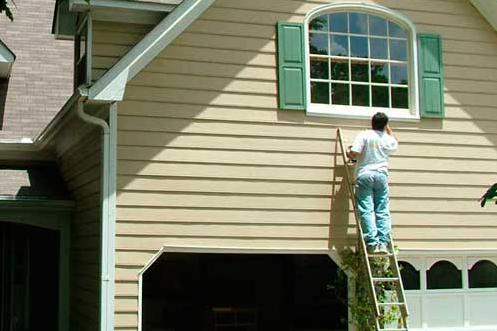
Negative properties include the following:
- Inability to work in extreme heat or rain. In no case should such paints be mixed with water, and a large amount of ultraviolet light will cause the paint to crack before it has completely dried;
- Fairly low elasticity, which requires evenness from the base. Otherwise, cracks will appear.
Advice!
So that the paint dries longer, which is especially important in the case of high ambient temperatures, a soap solution can be added to it.
Indeed, adding a little soapy solution, you can ensure that the paint will dry for a longer period, which means that it does not crack even at very high temperatures.
I must say that GOST for perchlorovinyl facade paints does not imply the presence of such a solution, therefore, to say how much it can not be added precisely - the more the solution, the longer the paint will dry.
By the way, GOST for perchlorovinyl paint (only for ХВ 161) has a digital designation 25129-82.
Application features
Instructions for the use of perchlorovinyl paint are slightly different from the instructions for use, for example, with acrylic enamel.
All DIY work must be carried out in compliance with the following rules:
- Before use, the container with the material must be left at room temperature for at least 8 hours, which will reduce the viscosity;
- The surface to be treated must be cleaned, washed and leveled (we spoke about irregularities a little higher);
- As already mentioned, before applying the surface to be treated it is recommended to be varnished, for example, XB-148, and over (for leveling), XB-0018;
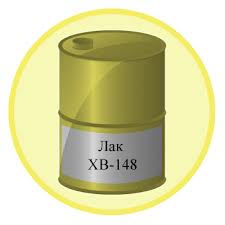
- Throughout the work, the paint should be thoroughly mixed;
- If necessary, it can be diluted. As diluents, it is recommended to use solvent or xylene, but in an amount not exceeding 1/10 of the total volume;
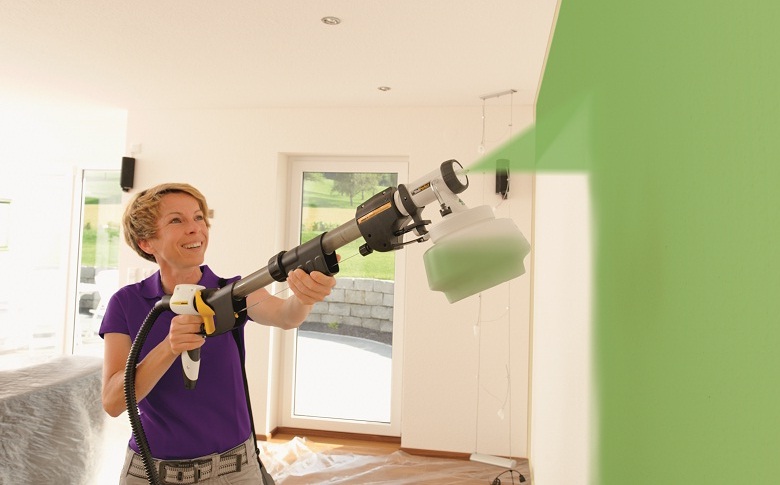
- Apply in two layers. This is due to the fact that the first layer is almost completely absorbed into the base material. The interval between applications should be at least 24 hours;
Conclusion
From all of the above, one simple conclusion can be drawn: this type of enamel and paint fully justifies its popularity, despite the relatively recent appearance in the markets. Those disadvantages that are associated only with the features of the application are more than compensated by durability and low cost.
You can learn more about this question from the video in this article.


[Click on photo
for increase ]
Perchlorovinyl paint is used for the exterior decoration of buildings. Its composition includes pigments, perchlorovinyl resin, fillers, dissolved in solvent or xylene.
Description
Facade perchlorovinyl paint is a rather expensive, but very durable finish. Therefore, the preparation of the surface for this paint should be performed especially carefully. From old paint, it is best to clean the facades with a sandblasting machine. If it is impossible to obtain compressed air for the apparatus, then the cleaning is carried out with steel scrapers. Manual cleaning does not guarantee the required quality of work. Therefore, it is always necessary to strive to clean the facade with sand.
Technology
How to paint in winter
It is no secret that the coloring of elements that are on the street is best in the warm season
Finishing of facades
Despite the fact that the construction market offers a wide variety of facade materials, the finish painting of facades remains the most popular way of finishing
 Painting a brick wall: master's advice
Painting a brick wall: master's advice
Today, people are trying to look for new options for interiors that would make their home truly original. One of these is the use of open brick wall in the interior of the house
Facade paint XB 161: characteristics and application
ХВ 161 paint is characterized by excellent weather resistance, water resistance, oil and petrol resistance, abrasion resistance, good bending elasticity up to 5 mm and protective properties
Paint perchlorovinyl front HV 161. Features of application
Perchlorvinyl facade paint ХВ 161 is perfect for winter work, slightly thickens at low temperatures

[Click on photo
for increase ]
Perchlorovinyl paint is a suspension of pigments in a solution of perchlorovinyl resin, which is the polymer film former.
Pros and cons of perchlorovinyl facade paint
Perchlorvinyl facade paint forms a good moisture and weather resistant coating with strong adhesion. Paint can be applied on brick, wood, concrete and plaster substrates. The main advantage of the paint is a little thicken at lower temperatures, which allows the paint to work at negative winter temperatures from -16 without deterioration. The main thing is that there is no snowfall and rain. Also, you can not paint in direct sunlight, the paint dries quickly and begins to crack. Professionals add a solution of laundry soap to the paint so that it does not dry longer. The paint is inexpensive. Another characteristic feature is the deep saturated color of the paint. But there is a significant minus. Due to the high content of pigments, the paint is not sufficiently plastic and deforms when the facade is deformed due to the release of excess chlorine from the resin.
Technology
How to paint in winter
It is no secret that the coloring of elements that are on the street is best in the warm season
Finishing of facades
Despite the fact that the construction market offers a wide variety of facade materials, the finish painting of facades remains the most popular way of finishing
 Painting a brick wall: master's advice
Painting a brick wall: master's advice
Today, people are trying to look for new options for interiors that would make their home truly original. One of these is the use of an open brick wall in the interior of a house
Facade paint XB 161: characteristics and application
ХВ 161 paint is characterized by excellent weather resistance, water resistance, oil and petrol resistance, abrasion resistance, good bending elasticity up to 5 mm and protective properties
Paint perchlorovinyl front HV 161. Features of application
Perchlorvinyl facade paint ХВ 161 is perfect for winter work, slightly thickens at low temperatures
Water-based facade paint. Features of use
Front water based paints widely used for painting facades, perfectly adhere to concrete, brick, wood and plastered surfaces
